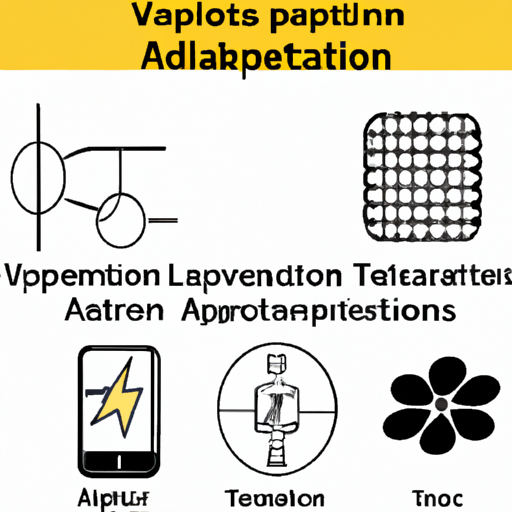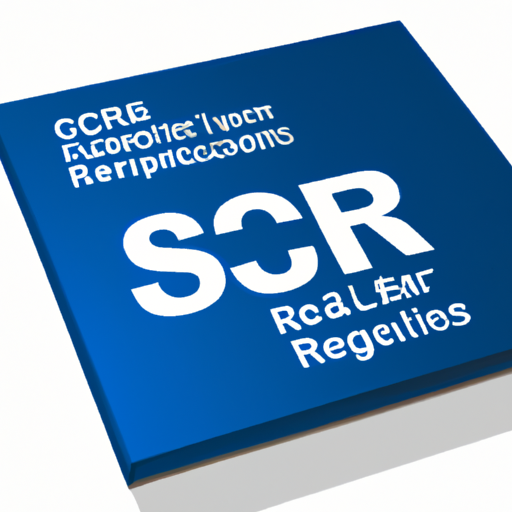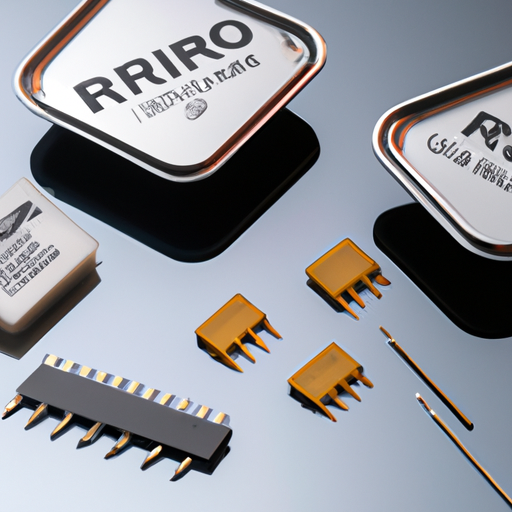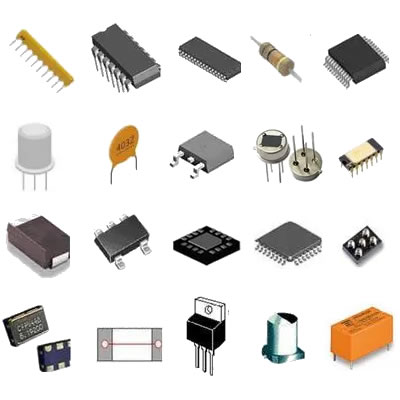What are the top 10 popular models of mainstream resistor boxes?
What are the Top 10 Popular Models of Mainstream Resistor Boxes?
Introduction
In the world of electronics, precision and reliability are paramount. One of the essential tools that engineers, technicians, and hobbyists rely on is the resistor box. A resistor box, also known as a resistor decade box or resistor substitution box, is a device that contains multiple resistors, allowing users to easily select and connect different resistance values in a circuit. This versatility makes resistor boxes invaluable for testing, prototyping, and educational purposes. In this article, we will explore the top 10 popular models of mainstream resistor boxes, providing insights into their specifications, features, and applications.
Section 1: Understanding Resistor Boxes
1.1 What is a Resistor Box?
A resistor box is a compact device that houses a series of resistors, which can be connected in various configurations to achieve desired resistance values. These boxes can be categorized into three main types:
Fixed Resistor Boxes: These contain a set of fixed resistors, allowing users to select from predetermined resistance values.
Variable Resistor Boxes: These feature adjustable resistors (potentiometers) that enable users to fine-tune resistance values within a specified range.
Programmable Resistor Boxes: These advanced models allow users to digitally set resistance values, often through a computer interface, providing greater flexibility and precision.
1.2 Applications of Resistor Boxes
Resistor boxes are widely used in various applications, including:
Circuit Testing and Calibration: Engineers use resistor boxes to simulate different circuit conditions, allowing them to test and calibrate electronic devices effectively.
Educational Settings: In classrooms and laboratories, resistor boxes serve as practical tools for teaching students about electrical principles and circuit design.
Research and Development: Researchers utilize resistor boxes to prototype new circuits and validate their designs before moving to production.
Section 2: Criteria for Selecting Resistor Boxes
2.1 Key Features to Consider
When selecting a resistor box, several key features should be considered:
Resistance Range and Accuracy: The range of resistance values available and the accuracy of those values are critical for effective testing.
Number of Resistors and Configuration Options: A higher number of resistors and flexible configuration options can enhance the versatility of the box.
Build Quality and Durability: A well-constructed resistor box will withstand frequent use and provide reliable performance over time.
Portability and Ease of Use: Lightweight and user-friendly designs are essential for technicians who need to transport their equipment.
2.2 Price vs. Performance
Resistor boxes come in a wide range of prices, from budget-friendly options to high-end models. It's essential to find a balance between price and performance, ensuring that the selected model meets specific needs without overspending.
Section 3: Top 10 Popular Models of Mainstream Resistor Boxes
3.1 Model 1: B&K Precision 8500
**Overview of Specifications**: The B&K Precision 8500 is a versatile resistor box featuring a resistance range of 1Ω to 10MΩ with a 1% accuracy.
**Key Features and Benefits**: This model includes 10 selectable resistors, allowing for easy adjustments. Its compact design makes it portable, and it is ideal for both educational and professional use.
**Typical Applications**: Commonly used in laboratories for circuit testing and educational demonstrations.
3.2 Model 2: Tenma 72-10070
**Overview of Specifications**: The Tenma 72-10070 offers a resistance range of 1Ω to 1MΩ with a 5% accuracy.
**Key Features and Benefits**: This fixed resistor box features 10 different resistors and is known for its affordability and ease of use.
**Typical Applications**: Suitable for hobbyists and educational settings.
3.3 Model 3: Velleman K8200
**Overview of Specifications**: The Velleman K8200 is a programmable resistor box with a resistance range of 0Ω to 1MΩ.
**Key Features and Benefits**: It allows users to set resistance values digitally, making it ideal for precise applications.
**Typical Applications**: Used in advanced research and development projects.
3.4 Model 4: Elenco 1000
**Overview of Specifications**: The Elenco 1000 features a resistance range of 1Ω to 10MΩ with a 1% accuracy.
**Key Features and Benefits**: This model is compact and user-friendly, making it suitable for both beginners and experienced users.
**Typical Applications**: Commonly used in educational environments and basic circuit testing.
3.5 Model 5: Hantek HT-305
**Overview of Specifications**: The Hantek HT-305 is a variable resistor box with a range of 0Ω to 1MΩ.
**Key Features and Benefits**: It features adjustable resistors, allowing for fine-tuning of resistance values.
**Typical Applications**: Ideal for prototyping and testing in various electronic projects.
3.6 Model 6: Keysight 34470A
**Overview of Specifications**: The Keysight 34470A is a high-end programmable resistor box with a range of 1Ω to 10MΩ.
**Key Features and Benefits**: Known for its precision and reliability, this model is suitable for professional applications.
**Typical Applications**: Used in advanced testing and calibration in laboratories.
3.7 Model 7: ProTek 1000
**Overview of Specifications**: The ProTek 1000 offers a resistance range of 1Ω to 10MΩ with a 2% accuracy.
**Key Features and Benefits**: This model is designed for durability and ease of use, making it a popular choice among technicians.
**Typical Applications**: Commonly used in fieldwork and educational settings.
3.8 Model 8: Rigol DG1022Z
**Overview of Specifications**: The Rigol DG1022Z is a digital function generator with an integrated resistor box feature.
**Key Features and Benefits**: This multifunctional device allows users to generate waveforms while also providing resistance values.
**Typical Applications**: Ideal for advanced circuit testing and educational demonstrations.
3.9 Model 9: Amprobe R-100
**Overview of Specifications**: The Amprobe R-100 features a resistance range of 1Ω to 1MΩ with a 5% accuracy.
**Key Features and Benefits**: This model is compact and portable, making it suitable for fieldwork.
**Typical Applications**: Used in various testing applications, including HVAC and electrical systems.
3.10 Model 10: Fluke 5500A
**Overview of Specifications**: The Fluke 5500A is a high-precision programmable resistor box with a range of 1Ω to 10MΩ.
**Key Features and Benefits**: Known for its accuracy and reliability, this model is ideal for professional calibration and testing.
**Typical Applications**: Commonly used in metrology labs and advanced research.
Section 4: Comparison of the Top Models
4.1 Summary Table of Specifications
| Model | Resistance Range | Accuracy | Type |
|---------------------|------------------|----------|---------------------|
| B&K Precision 8500 | 1Ω to 10MΩ | 1% | Fixed |
| Tenma 72-10070 | 1Ω to 1MΩ | 5% | Fixed |
| Velleman K8200 | 0Ω to 1MΩ | N/A | Programmable |
| Elenco 1000 | 1Ω to 10MΩ | 1% | Fixed |
| Hantek HT-305 | 0Ω to 1MΩ | N/A | Variable |
| Keysight 34470A | 1Ω to 10MΩ | N/A | Programmable |
| ProTek 1000 | 1Ω to 10MΩ | 2% | Fixed |
| Rigol DG1022Z | N/A | N/A | Multifunctional |
| Amprobe R-100 | 1Ω to 1MΩ | 5% | Fixed |
| Fluke 5500A | 1Ω to 10MΩ | N/A | Programmable |
4.2 Pros and Cons of Each Model
B&K Precision 8500: Pros - High accuracy, compact design. Cons - Limited resistance range.
Tenma 72-10070: Pros - Affordable, easy to use. Cons - Lower accuracy.
Velleman K8200: Pros - Programmable, precise. Cons - Higher cost.
Elenco 1000: Pros - User-friendly, reliable. Cons - Limited features.
Hantek HT-305: Pros - Adjustable resistors, versatile. Cons - Limited range.
Keysight 34470A: Pros - High precision, professional-grade. Cons - Expensive.
ProTek 1000: Pros - Durable, portable. Cons - Moderate accuracy.
Rigol DG1022Z: Pros - Multifunctional, advanced features. Cons - Complexity.
Amprobe R-100: Pros - Compact, field-friendly. Cons - Limited range.
Fluke 5500A: Pros - High accuracy, reliable. Cons - High price.
Section 5: Conclusion
Selecting the right resistor box is crucial for anyone involved in electronics, whether for testing, prototyping, or educational purposes. The models discussed in this article represent some of the best options available on the market today, each with its unique features and applications. When choosing a resistor box, consider your specific needs, including the required resistance range, accuracy, and budget. By doing so, you can ensure that you select a model that will serve you well in your electronic endeavors.
References
- B&K Precision. (n.d.). Resistor Boxes. Retrieved from [B&K Precision](https://www.bkprecision.com)
- Tenma. (n.d.). Resistor Decade Box. Retrieved from [Tenma](https://www.tenma.com)
- Velleman. (n.d.). K8200 Resistor Box. Retrieved from [Velleman](https://www.velleman.eu)
- Elenco. (n.d.). Resistor Box 1000. Retrieved from [Elenco](https://www.elenco.com)
- Hantek. (n.d.). HT-305 Variable Resistor Box. Retrieved from [Hantek](https://www.hantek.com)
- Keysight Technologies. (n.d.). 34470A Multimeter. Retrieved from [Keysight](https://www.keysight.com)
- ProTek. (n.d.). ProTek 1000 Resistor Box. Retrieved from [ProTek](https://www.protek.com)
- Rigol Technologies. (n.d.). DG1022Z Function Generator. Retrieved from [Rigol](https://www.rigolna.com)
- Amprobe. (n.d.). R-100 Resistor Box. Retrieved from [Amprobe](https://www.amprobe.com)
- Fluke. (n.d.). 5500A Calibration System. Retrieved from [Fluke](https://www.fluke.com)
This comprehensive overview of the top 10 popular models of mainstream resistor boxes provides valuable insights for anyone looking to enhance their electronic testing and prototyping capabilities.







